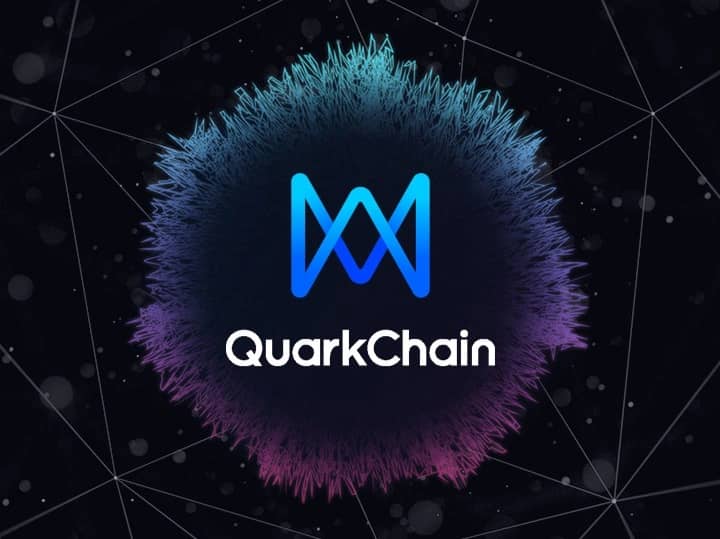위키 구독하기
Share wiki
Bookmark
QuarkChain
QuarkChain
QuarkChain은 샤딩을 활용하여 고용량 피어투피어(P2P) 트랜잭션 네트워크를 구축하는 확장성이 매우 뛰어난 블록체인입니다. QKC는 자체 디지털 코인인 QKC를 통해 P2P 트랜잭션을 가능하게 하는 다계층 블록체인으로 설계되었습니다.[1]
개요
QuarkChain은 독창적인 설계와 효율적인 데이터 분산 구조 덕분에 초당 10만 건 이상의 트랜잭션 처리(처음에는 백만 건 이상이었으나 프로젝트 광고 전략 변경으로 인해 감소)를 목표로 하는 P2P 네트워크입니다.[2]
QKC는 샤딩을 사용하며 글로벌 상용 표준을 충족하고, 혼잡 없이 높은 사용량 시나리오에서 추가적인 유연성과 속도를 제공하도록 설계되었습니다. 이 네트워크는 분산 소셜 미디어, 고주파 거래, IoT, 결제 및 게임과 같은 애플리케이션을 위한 고처리량 네트워크가 되는 것을 목표로 합니다.[3]
QKC는 이러한 두 가지 요구 사항 간의 균형을 맞추는 솔루션을 찾기 위해 체인의 두 가지 주요 기능을 별도의 계층으로 분리하기 시작했습니다. 첫 번째 계층은 모든 트랜잭션의 하위 집합을 독립적으로 처리하는 작은 블록체인 또는 조각을 포함합니다. 조각의 수가 증가함에 따라 동시에 처리할 수 있는 트랜잭션 수도 증가합니다.[1]
QuarkChain의 두 번째 계층은 "루트 체인"입니다. 루트 체인의 기본 기능은 모든 블록을 확인하는 것이지만 트랜잭션 자체를 처리하는 것은 아닙니다.[2]
QuarkChain은 샤드 트랜잭션과 크로스-샤드 트랜잭션의 두 가지 유형의 트랜잭션을 허용합니다. 샤드 트랜잭션은 동일한 샤드의 주소 간에 발생합니다. 그러나 QuarkChain을 다른 고처리량 솔루션과 차별화하는 것은 크로스-샤드 트랜잭션을 수행하는 기능입니다.[3]
크로스-샤드 시스템의 사용자 경험을 단순화하기 위해 QuarkChain은 스마트 지갑을 개발하고 있습니다. 사용자가 모든 섀시에서 소유한 모든 주소는 단일 개인 키를 통해 액세스할 수 있습니다. 이론적으로 사용자는 서로 다른 조각과 관련된 여러 주소를 가질 수 있습니다. 이 문제를 해결하기 위해 QuarkChain은 지갑 내에서 기본 계정과 보조 계정을 모두 사용합니다.[1]
기본 계정에는 사용자의 기본 샤드 주소가 포함되고 보조 계정은 나머지 샤드를 관리합니다. 자금 관리를 단순화하기 위해 보조 계정에서 실행되는 트랜잭션은 나머지 계정을 기본 계정으로 되돌립니다. 사용자 잔액은 기본 계정에 남아 있으므로 여러 섀시에 걸쳐 여러 잔액으로 인한 혼란을 방지합니다.[2]
QuarkChain ICO 토큰(QKC)은 ERC-20과 호환되며 이더리움 블록체인에 배포됩니다. 2014년 4분기에 메인 네트워킹이 시작된 후 ERC-20 토큰은 사전 채굴을 통해 메인넷 토큰으로 전환됩니다. 향후 QKC는 채굴자에 의해 생성됩니다. QKC는 시스템의 가치를 거래하는 유일한 수단이며 채굴자에게 보상을 제공합니다. QuarkChain은 기존 앱과의 향후 호환성을 지원하기 위해 이더리움 가상 머신(EVM)에서 스마트 계약을 지원하여 확장성을 높입니다.[3]
QuarkChain 토큰
QKC는 QuarkChain 네트워크의 참여자 간의 교환 단위로 사용되는 환불 불가능한 기능적 유틸리티 토큰이며 네트워크의 기본 토큰으로만 사용하도록 설계되었습니다.[1]
QKC는 배포자가 이더리움 블록체인에서 ERC20 표준 준수 디지털 토큰으로 발행합니다. QKC는 QuarkChain 네트워크에서만 사용할 수 있으며 QKC 소유권은 QKC를 QuarkChain 네트워크의 사용 및 상호 작용을 가능하게 하는 수단으로 사용할 권리 이외에는 어떠한 권리도 부여하지 않습니다.[2]
QKC는 QuarkChain 네트워크의 필수적인 부분입니다. QKC가 없으면 사용자가 리소스를 확장하여 활동에 참여하거나 QuarkChain 네트워크의 전체 생태계에 도움이 되는 서비스를 제공할 인센티브가 없습니다.[3]
QuarkChain의 특징
QuarkChain의 주요 특징은 다음과 같습니다.
재샤딩 가능한 2계층 블록체인: QuarkChain의 핵심에는 두 계층의 블록체인이 있습니다. 한 계층은 샤딩 블록체인(샤드)으로 구성되고 다른 하나는 루트 블록체인입니다. 루트 블록체인은 첫 번째 계층의 블록을 확인하는 기능을 합니다. 두 번째 계층은 루트 계층을 변경하지 않고 재샤딩할 수 있습니다.[1]
시장 주도형 협업 채굴: 게임 이론 인센티브를 사용하여 모든 트랜잭션의 보안을 보장합니다. 기본적으로 해시 파워의 50%가 루트 체인에 할당되어 모든 트랜잭션에서 이중 지출을 방지합니다.[2]
분산형 수평적 확장성: 높은 TPS를 가진 블록체인은 일반적으로 과도하게 비싼 슈퍼 풀 노드로 이어집니다. 이러한 구조는 채굴 중앙화를 조장합니다. QuarkChain은 여러 저렴한 노드가 슈퍼 풀 노드를 형성할 수 있도록 함으로써 이 문제를 해결합니다.[3]
효율적인 크로스-샤드 트랜잭션: QuarkChain은 몇 분 안에 확인되고 언제든지 발행할 수 있는 빠른 크로스-샤드 트랜잭션을 허용합니다. 크로스-샤드 트랜잭션 속도는 네트워크의 샤드 수와 관련이 있습니다.[1]
튜링 완전 스마트 계약: 이 시스템은 튜링 완전 스마트 계약과 이더리움 가상 머신(EVM)을 지원하여 EVM 댑과 QuarkChain 플랫폼 간의 원활한 마이그레이션을 허용합니다. 따라서 Solidity로 구축된 댑 중 더 높은 처리량이 필요한 댑은 플랫폼으로 쉽게 마이그레이션할 수 있습니다.[2]
잘못된 내용이 있나요?
